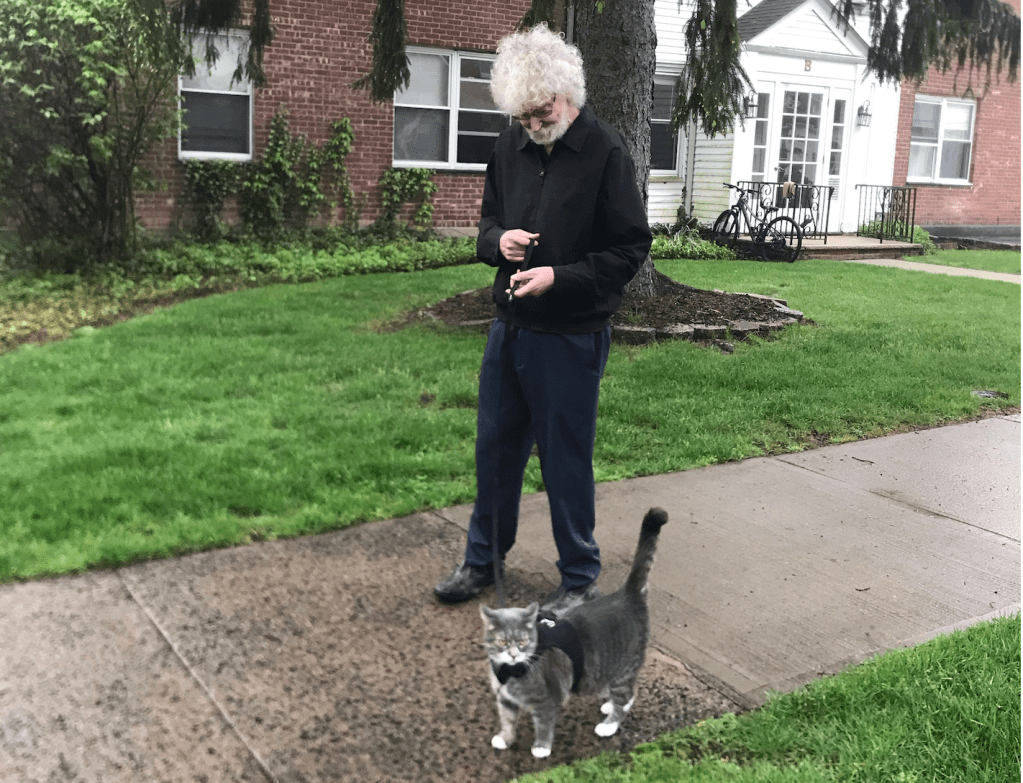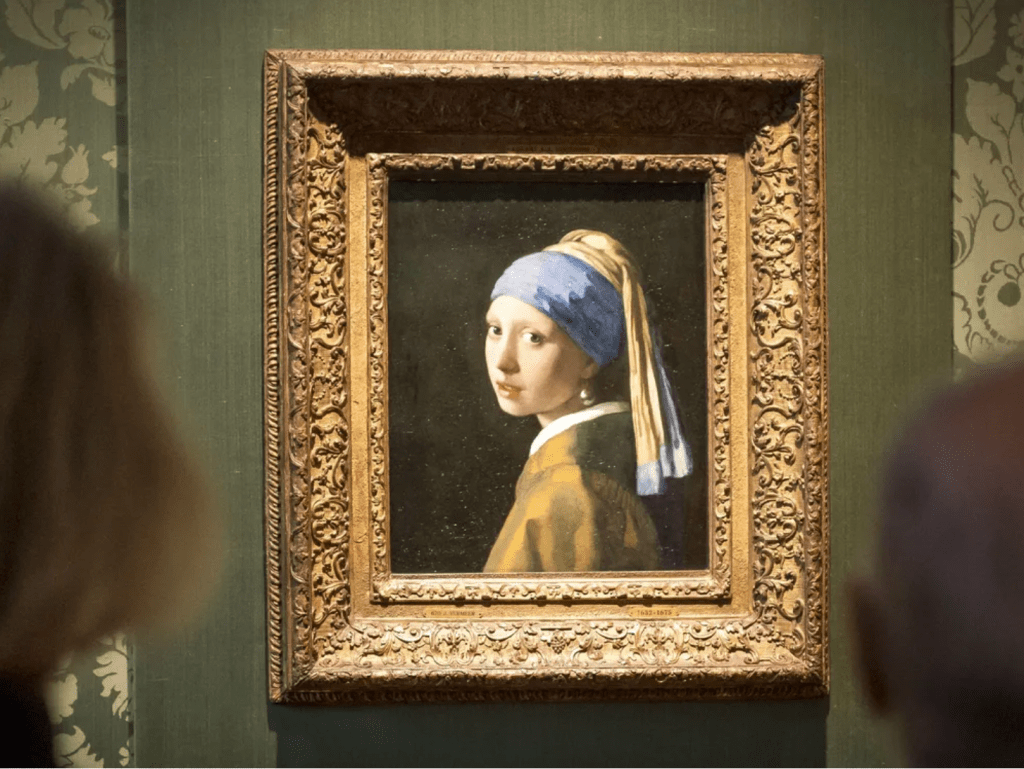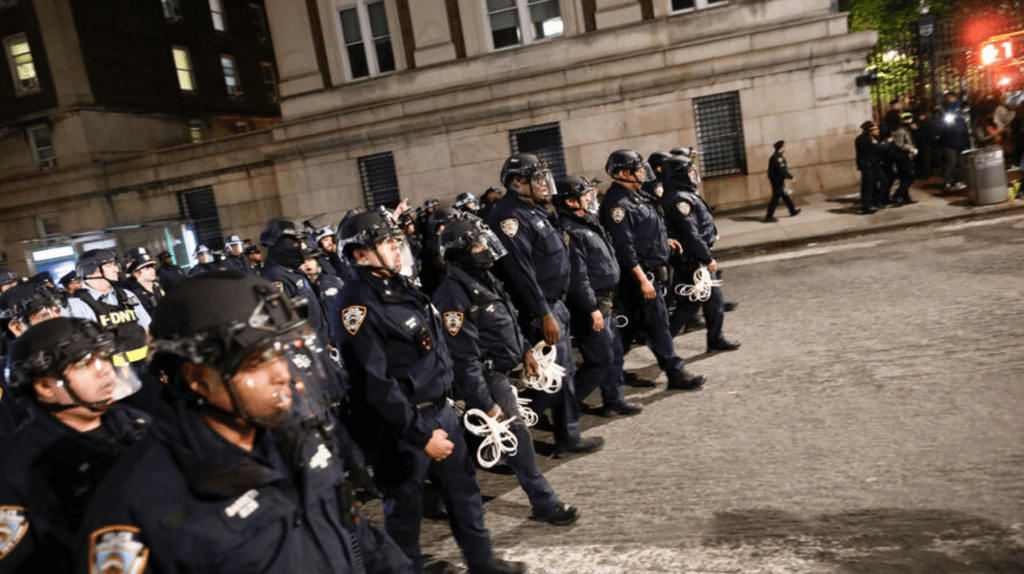
My feline self being walked by Dave. The upraised tail that looks like a number 1 means this blog post will get 1 visitor. Well, maybe more. (Photo by Laurel Cummins.)
I’m Misty the Cat, and I’m here to guest-blog again for my human Dave. It’s a good time for me to do so because I recently read George Eliot’s Middlemay. Um…Dave just nudged me to say that the title of Eliot’s iconic novel is actually Middlemarch, but I try not to dwell on the past (two months ago).
Also, I and Dave recently read Walter Mosley’s The Last Days of Ptolemy Grey, and we agree that it’s a great example of how some novels contain many elements in addition to the plot and characters. In this case, Mosley explores themes such as racism, poverty, old age, dementia, and Moby-Dick buying Starbucks coffee from the Starbuck character in Herman Melville’s famous sea saga. But how does a whale hold a coffee container? And do aquatic mammals prefer decaffeinated?
To tell you the truth, Mosley did not mention Moby-Dick. But I have rarely seen a better depiction of memory loss than the one that author crafted for his nonagenarian protagonist Ptolemy. The character’s many foggy moments, coupled with a dramatic period of clarity, were compelling and poignant for a cat to experience. And…um…I forgot what I was going to write next. Oh…Lisa Genova also skillfully depicted a fading mind when spotlighting early-onset Alzheimer’s disease in her novel Still Alice. Which reminds me that when Ralph Kramden of the 1950s sitcom The Honeymooners chauvinistically joked about giving his wife Alice a smack that would send her “to the moon,” he invented science fiction.
Wait, you say the real sci-fi pioneers were authors like Mary Shelley, Jules Verne, and H.G. Wells? All I can say is Verne also wrote adventure novels, including Around the Food Bowl in Eighty Days. Cats prefer their bowls to have large circumferences.
An unusual and heartwarming element of Mosley’s book was the cross-gender and cross-generational but not cross-species friendship of 91-year-old Ptolemy and 17-year-old Robyn. That age gap was the largest since 969-year-old Methuselah (born in 3074 BC) hung out with 21-year-old singer Olivia Rodrigo (born in 2003 AD) to discuss Spotify and other music streaming services. Leading me, Misty the Cat, to wonder why Miguel de Cervantes’ 17th-century classic Don Quixote didn’t feature rock musicians when Tom Perrotta’s The Wishbones (1997) and Jonathan Franzen’s Freedom (2010) did. Any theories?
Three years after Freedom was published, acclaimed short-story writer Alice Munro won the Nobel Prize in Literature. Sadly, she died this past week at age 92. I’ve read only one of her story collections — Friend of My Youth — which I enjoyed except for the tale “Oranges and Apples” because felines are not fans of fruit. Which explains why The Grapes of Wrath author John Steinbeck drove around the United States with a dog rather than a cat in Travels with Charley.
Acclaimed novelist Paul Auster also recently passed away, late last month. As with Munro, I’ve read only one of his works: The Music of Chance. After doing that, I used my paw to swipe at a Chance card on my humans’ Monopoly board, expecting to hear music — like when you open those greeting cards that have sound. But, alas, all I heard was the usual clanking of machinery at the nearby factory that manufactures literature blogs.
In conclusion, I’ll mention that I have my own book coming out in a couple months. That seriocomic work, told in my own feline voice, is partly fact and partly fiction — so I guess it can be described as a memoir or a novel. It’s called Misty the Cat…Unleashed, and the ellipsis in the title was purchased from Ellipses R Us just before that retail chain went out of business.
The question of the week, which occurred to me during one of the daily cat walks my peeps take me on: Are all bloggers billionaires or just millionaires? 🤔
Dave’s literary-trivia book is described and can be purchased here: Fascinating Facts About Famous Fiction Authors and the Greatest Novels of All Time.
In addition to this weekly blog, Dave writes the 2003-started/award-winning “Montclairvoyant” topical-humor column every Thursday for Montclair Local. The latest piece — about the results of my town’s May 14 election and the settlement of a major lawsuit — is here.

